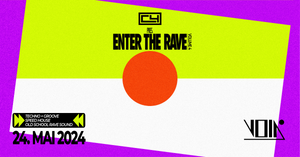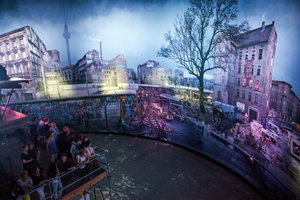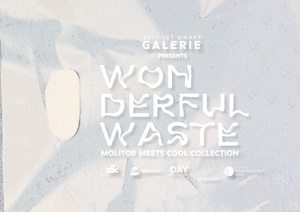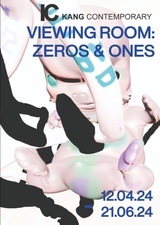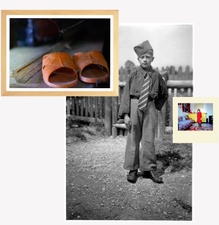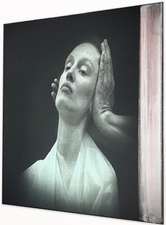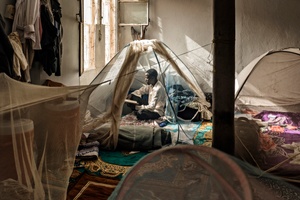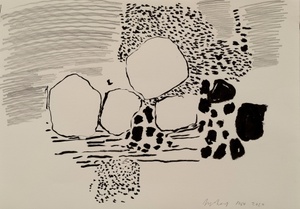Kaifan Wang I Wade Through Until the Waters Blue
In the organizer's words:
GNYP Gallery has the great pleasure to present Wade Through Until the Waters Blue. The solo exhibition of the Berlin-based Chinese artist Kaifan Wang can be seen from April 26 to June 15, 2024 at Knesebeckstr. 96, 10623 Berlin.
Exhibition text:
The great Brazilian poet Carlos Drummond de Andrade (1902 - 1987), one of the most important names in local modernism, once made a complaint his artistic program. He said that "being modern" turned out to be "boring" and that he had no choice but to become "timeless" without modesty. In addition to the penchant for wordplay typical of this generation, two things stand out. Firstly, the poet recognized that modernism was, in a sense, a historical phenomenon and that its powers would eventually be exhausted. Most importantly, Drummond recognized that modernism was a concept that could only be applied to certain places, namely the European context. Brazilian poetry and art in general, as it turned out, responded to other impulses and concerns. Ultimately, it should be judged according to other criteria, not those that apply elsewhere. In particular, it should be judged by its temporality.
Despite the obvious differences, Kaifan Wang's art, which is now being shown for the second time in a solo exhibition at the GNYP Gallery Berlin, seems to fit quite well into this idea. The conceptual boundaries pointed out by Drummond also play a role in his work. One should pay attention to his specific ciphers to better appreciate his particular power if one does not want to be misled; Wang's art is what it looks like at first glance, but much more.
The primary slant of his canvases - works full of controlled yet free gestures, subtle and sometimes harsh collisions of color, and without a discernible mimetic animus - places them in what we would call "abstract art," one of modernism's most important manifestations in the visual realm. Moreover, the sheer size of a canvas like "Wading Through Water", to take one example, testifies to one of modernism's most consistent approaches: the utopian desire to encompass the world, or better still, to transform the world into art. Without clear boundaries, it is as if
the painting invades the outer realm and draws us into its premises. This was the reason for the ever-expanding canvases that Claude Monet (1840 - 1926) painted in his later years.
However, no artistic analysis is content with a mere visual approach. While modernism was notorious for its disdain for tradition, Wang enters into a very productive and generous relationship with history in his works. In his case, his paintings refer to names such as Zhao Ji (1082 - 1135), the eighth emperor of the Song dynasty, who was famous for his paintings and calligraphies created more than a thousand years ago. The same dimensions are present, as well as the color palette and narrative feel that points to a practice that is, all in all, more than a classic - it hovers close to the notion of the eternal/immortal. Furthermore, there are echoes of the European Renaissance at the end of the spectrum, palpable through the specific colors Wang uses. The limited chromatic choices can be found, for example, in a fresco (think of the discarded colors on a church wall) or in the fluid indecision between background and foreground. In other words, one pigment penetrates and interacts with the other, creating a constant movement that is emphasized by the broken circles, traces and outlines that the artist creates.
In any case, what lies behind these influences is the rapprochement of Orient and Occident through the recognition of their mutual and dynamic fertilization. Beyond debates of plunder or violent conquest, it suggests how ideas were integrated, modified and disseminated. The idea of cultural cherry-picking emerges. As many of the titles of the paintings suggest, this is an important theme for Wang. Cherry and Willow, it seems, express precisely the meaning of friendship in different cultural contexts, reminding us how ideas that originated in one context were then transported by another, such as the painting Dames au Parasol, created by the Dutch artist Cornelis Pronk around 1730, which was used as a motif for Chinese porcelain made in Jingdezhen and ordered by the Dutch East India Company for trade in Europe.
It would be all too obvious to claim that Kaifan Wang's paintings bring together past and present, East and West. Instead, and this is one of the most contemporary aspects of his art, such notions lose their appeal in his work; their conceptual power does not achieve much. You don't need to know any particular artist or canon to appreciate the simple beauty of these canvases. They stand on their own, indifferent to conflicts of tradition or critical homage, welcoming us into their world without judgment - which means a lot these days.
João Gabriel Rizek
This content has been machine translated.

